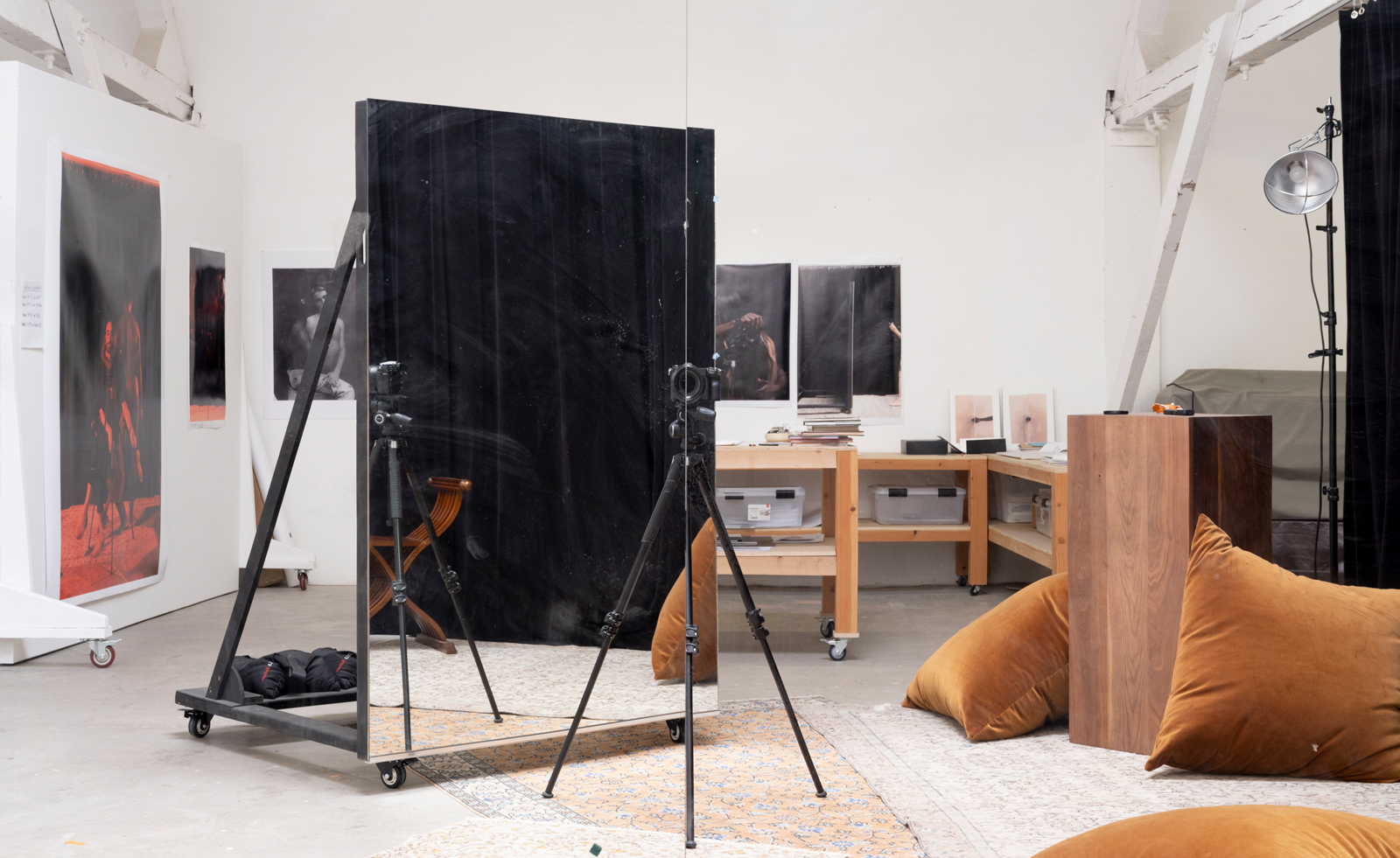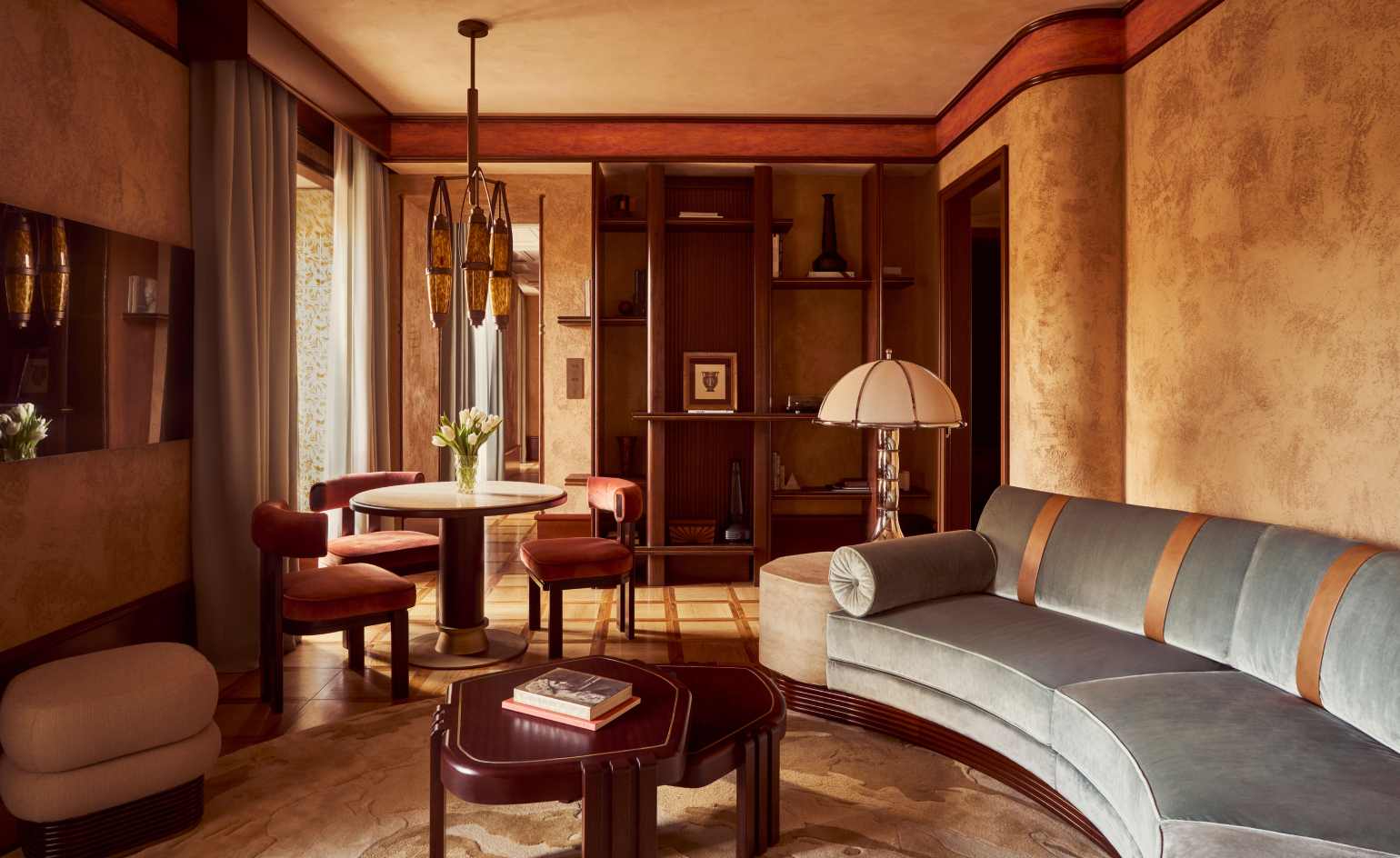Paul Mpagi Sepuya dissects race and sexuality in intimate photography
A survey of Paul Mpagi Sepuya's recent work, ‘Exposure’, goes on view at Nottingham Contemporary, UK

Paul Mpagi Sepuya’s photography is instantly recognisable in its content and its composition. His practice, which he considers more art than photography, has gone back two decades and has looked at queer bodies, sexuality, race and colonial history through the captured image. Spanning portraiture, self-portraiture and collage, his studio-based work uses mirrors, found objects and the camera itself to explore our perceptions of bodies in relation to photography.
Now, a survey of his recent work, ‘Exposure’, is on view at Nottingham Contemporary, in the artists’ first UK institutional show (until 5 May 2024).
Sepuya never casts his images, and everyone who features in his work is a friend or a friend of a friend. Captured organically, he might shoot images at a party or while a friend is staying with him in Los Angeles. In 2023, he photographed creative movement director Stephen Galloway for the Wallpaper* USA 300 (a guide to creative America in which they both featured).
Paul Mpagi Sepuya, ‘Exposure’, Nottingham Contemporary

Paul Mpagi Sepuya, Daylight Studio Model Study (0X5A2323), 2022, archival pigment print
‘There are friends and there are some friends that I've photographed for 15 or 20 years at this point,’ Sepuya explains over video chat. ‘There are some friends too, I've known for a long time, but have only recently started to photograph. Maybe there's some people that I’m just getting to know, but I don't photograph strangers or models.’
The viewer is simultaneously played with and drawn in, whether we are looking at a full nude silhouette of the male body, on the diagonal, or two nude male figures, one sitting on the other’s lap, with the contrasting colour of their skin, the face of the photographer obscured by the camera.

Paul Mpagi Sepuya, Daylight Studio (DSCF0043), 2021, archival pigment print
Reflecting on the organic nature of what he does, Sepuya explains that the work he produces can vary depending even on the time of year: ‘[There’s] an ongoing cycle of things I'm thinking about in the studio. Maybe it's just about the seasons. Right now it's freezing-cold in the studio, and it's the time of year when one kind of picture is getting made. I was making a portrait with a friend who is also a photographer yesterday, and some still-lifes and it's very different from, let's say, in the spring or summer, when it's just incredibly hot in the space and then it is a much more comfortable time to make nudes or something like that.’
Over the last few years, the objects brought into his images have evolved to include not only the items of the studio – such as velvet backdrops, tripods, mirrors and cameras – but also plants and antiques, referencing the colonial legacy of portraiture. With the presence of people, he introduces questions about queerness, race and history, creating complex, compelling images.
Receive our daily digest of inspiration, escapism and design stories from around the world direct to your inbox.
Of the objects, he says, ‘There are some things that are from the 19th century, there's an object from the 18th century, there are things I have found that date from the 1980s. [My approach is a] postmodern take on [the appearance of] 13th-century objects in 19th-century photographs. So, they are contemporary objects really,’ he explains. ‘I was just interested in seeing what it was like to be in a space with these things, because [after] taking initial photo history classes and thinking about that stuff when I was an undergrad, I never felt any sort of interest or connection to 19th-century photographs.’

Paul Mpagi Sepuya, Dark Room Studio Mirror (0X5A3797), 2022, archival pigment print.
‘Exposure’ looks at Sepuya’s work from 2017 to 2022, and while there are changes in the composition, the staging of the subjects remains at the heart of the works in a play on the idea of the capturer and the captured, the watcher and the watched.
‘Portraiture is the constant,’ Sepuya says of the body of work, which has a liberating, relaxed sexuality that has led to comparisons to Robert Mapplethorpe. A curve of the arm here, the line of a back there, the elegance of the naked body, and so much more for the viewer to unpack or simply to enjoy.
‘Exposure’ is on at Nottingham Contemporary from 27 January – 5 May 2024
Amah-Rose Abrams is a British writer, editor and broadcaster covering arts and culture based in London. In her decade plus career she has covered and broken arts stories all over the world and has interviewed artists including Marina Abramovic, Nan Goldin, Ai Weiwei, Lubaina Himid and Herzog & de Meuron. She has also worked in content strategy and production.
-
 How designer Hugo Toro turned Orient Express’ first hotel into a sleeper hit
How designer Hugo Toro turned Orient Express’ first hotel into a sleeper hitThe Orient Express pulls into Rome, paying homage to the golden age of travel in its first hotel, just footsteps from the Pantheon
-
 These Kickstarter catastrophes and design duds proved tech wasn’t always the answer in 2025
These Kickstarter catastrophes and design duds proved tech wasn’t always the answer in 2025Odd ideas, Kickstarter catastrophes and other haunted crowd-funders; the creepiest, freakiest and least practical technology ideas of 2025
-
 This floating river cabin in Serbia is a peaceful haven inspired by old shipyards
This floating river cabin in Serbia is a peaceful haven inspired by old shipyardsThis Sava River cabin, a floating design by Aleksandar Stanković, is an intimate home, perfect for leisurely afternoons, cold water swimming and weekend stays